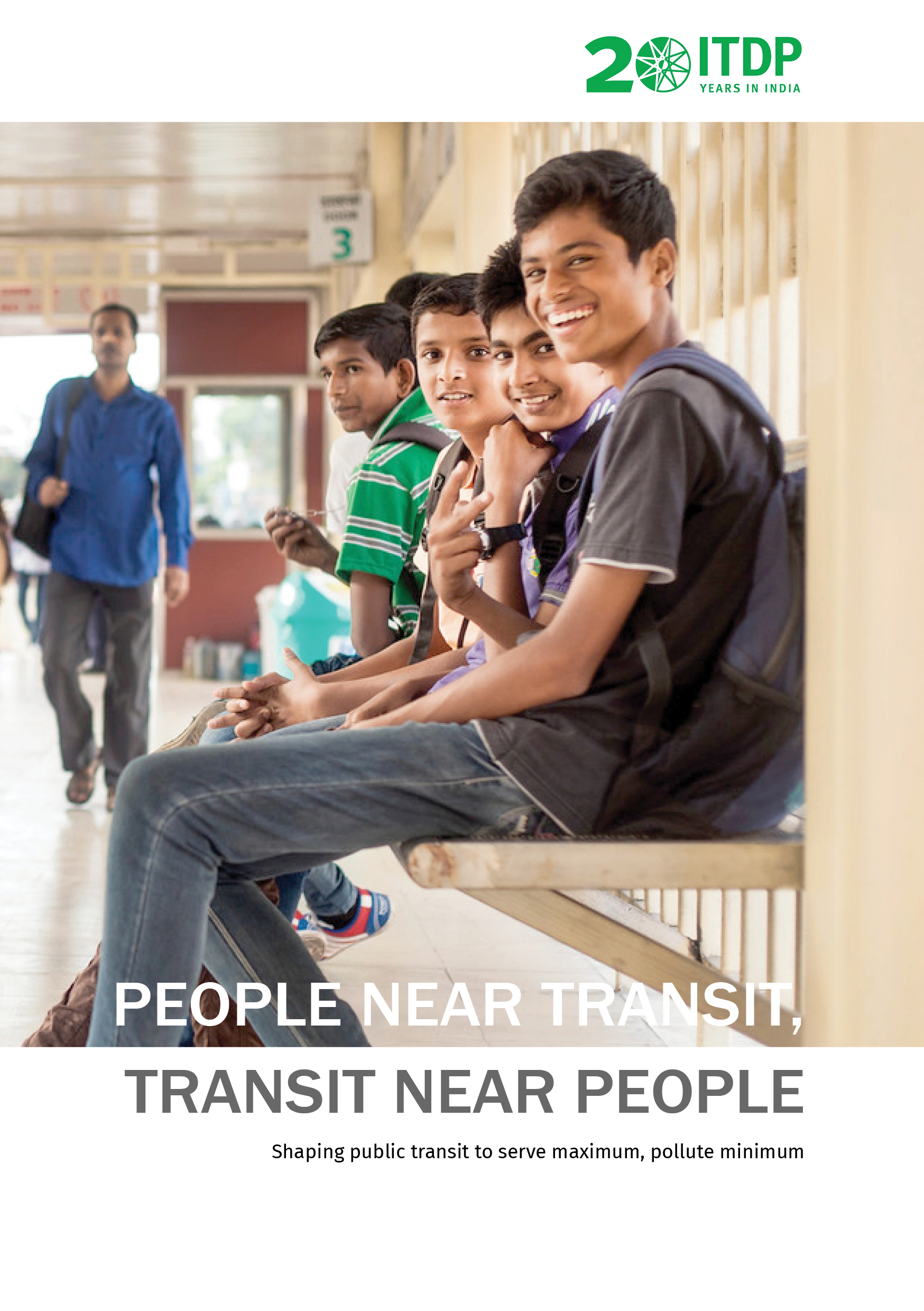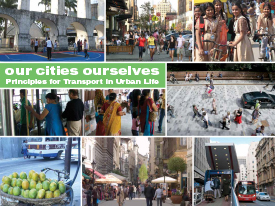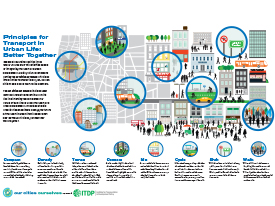The People Near Transit (PNT) report establishes the levels of urban transit services in Pune Metropolitan Region and the accessibility gaps that affects its residents.

by
The People Near Transit (PNT) report establishes the levels of urban transit services in Pune Metropolitan Region and the accessibility gaps that affects its residents.

The TOD Standard is a powerful tool to help shape and assess urban development. It focuses on maximizing the benefits of public transit and non-motorized mobility while placing the emphasis firmly back on the users: people. [Read more…]

Transit-oriented development (TOD) brings compact, mixed-use development within walking distance of high capacity rapid transit.
TOD features vibrant streetscapes, pedestrian-oriented built forms, and land use characteristics that make it convenient and safe to walk, cycle, and use public transport.
This poster demonstrates the principles for good Transit Oriented Development and the essential features required for it.

With the increased growth of cities and levels of urbanism in India comes challenges in the form of traffic, pollution, the need for equitable access to infrastructure & resources etc. all of which contribute in determining the quality of life. In the current situation where policy frameworks like JNNURM & SUTP are in place to address some of these issues, there is also a need for a framework for guiding development alongside these new & proposed transport infrastructure.
This framework is needed not only to maximize the impact of investments made under various policy heads, but also to contain urban sprawl by focusing development and densification of existing urban fabric, resulting in the creation of compact cities. There is also a need to identify financial mechanisms that would allow recapture of some of the increased value of properties around these transportation nodes.
Thus, this guide is meant to provide the said framework for planners, decision makers in the government, policy makers, developers as well as the general public to transform transit oriented development into reality.

These posters were made for a workshop on Transit Oriented Development in India in March 2013, and are illustrations of ITDP’s Eight Principles for Transport in Urban Life.
They include photos and descriptions of the various objectives and metrics of the eight principles: Walk, Cycle, Connect, Transit, Mix, Densify, Compact, and Shift.

Citizens of the world do not want to sit in bumper to bumper traffic. They do not want to walk in mud, not feel threatened on a simple bike ride to work. They want to be in cities that provide for creative interaction, affordable living and healthy environment. The successful city of the 21st century will be replete with choices, including non-motorized, post fossil-fuel travel options.
Cities that meet the challenge of sustainability will leap ahead of others by attracting people who demand a healthy and culturally rich lifestyle.
Sustainability does not have to hurt. Reducing carbon emissions, conserving land, and making transport more efficient go hand in hand with improving quality of life. We aspire to lay the foundation for achieving global sustainability not through uniform technological solutions but through a global celebration of local differences and innovation based on a common set of principles. Addressing the issues of sustainability by emphasizing local issues of livability with mobility as a link between the local and the global, the principles outlined in this book will help cities significantly reduce green house gases while improving quality of life.
The Our Cities Ourselves program invites design teams from ten cities around the world to apply these principles to ten unique locations. This book illustrates the principles that lay behind the designs.

The 8 Principles for better streets and better cities highlight the key aspects of transport-oriented development that lead to good growth. For more information about these principles and best practices in TOD, see ITDP’s TOD Standard.

Urban density is fundamental principle of sustainable development. Density supports economic and creative vibrancy, social integration, and a healthy, environmental sustainable development model. As the world’s population continues to urbanize, our cities have two options for growth: densify or sprawl. The private-car dependent sprawl model of the 20th century must change, and move away from a reliance on private cars, to accommodate a more populous, and more prosperous world. Watch the video the learn more about the benefits of dense urban development, and how to choose a future full of vibrant, sustainable cities. It’s smart to be dense!